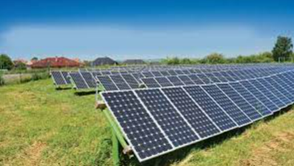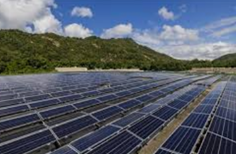Introduction
A solar generator is a device that uses the energy of sunlight to convert it into electricity. Solar generators convert the sun's energy into electricity by exposing the photovoltaic cells in the device to sunlight. The principle of solar generators is based on the conversion of solar light energy into electrical energy. This process does not produce any pollutants, so it is a very environmentally friendly energy source. Let's take a closer look at the functions and working principles of solar generators.
Solar cell components
Solar generators contain solar cell components, solar cell components are also called solar panels, photovoltaic modules, is the core part of the solar power generation system, is also the most important part of the solar power generation system, its role is to convert solar energy into electrical energy, or Send it to the battery for storage, or push the load to work.
Solar cell modules are composed of high-efficiency monocrystalline or polycrystalline solar cells, low-iron ultra-white suede tempered glass, packaging materials (EVA, POE, etc.), functional backplanes, interconnection bars, bus bars, junction boxes and aluminum alloy frames .

The principle of solar cells
The energy converter of solar photovoltaic power generation is a solar cell, also known as a photovoltaic cell. The principle of solar cell power generation is the photovoltaic effect. When sunlight shines on the solar cell, the cell absorbs light energy and generates photogenerated electron-hole pairs. Under the action of the built-in electric field of the battery, the photogenerated electrons and holes are separated, and the accumulation of opposite-sign charges occurs at both ends of the battery, that is, the "photovoltaic voltage" is generated, which is the "photovoltaic effect". If the electrodes are drawn out on both sides of the built-in electric field and connected to a load, the load will have a "photo-generated current" flowing, thereby obtaining power output. Like this, the light energy of the sun just directly becomes usable electric energy.
At the same temperature, the impact of light intensity on the solar panel: the greater the light intensity, the greater the open circuit voltage and short circuit current of the solar panel, and the greater the maximum output power. At the same time, it can be seen that the open circuit voltage changes with the irradiation intensity It is not as obvious as the change of short-circuit current with irradiation intensity.
Under the same light intensity, the influence of temperature on the solar panel: when the temperature of the solar cell increases, the output open circuit voltage decreases significantly with the temperature, and the short circuit current increases slightly. The general trend is that the maximum output power becomes smaller.

Characteristics of solar cells
The solar cell module has high photoelectric conversion efficiency and high reliability; advanced diffusion technology ensures the uniformity of conversion efficiency throughout the chip; ensures good conductivity, reliable adhesion and good electrode weldability; high precision Excellent screen printing graphics and high flatness make the battery easy for automatic welding and laser cutting.
According to the different materials used, solar cells can be divided into: silicon solar cells, multi-component compound thin film solar cells, polymer multilayer modified electrode solar cells, nanocrystalline solar cells, organic solar cells, plastic solar cells, among which silicon solar cells Batteries are the most mature and dominate the applications.
Conclusion
Solar generators are not only an environmentally friendly and energy-saving technology, but also a very practical energy source. Although the solar generator cannot work in cloudy sky and at night, they still become one of the most widely used new energy devices with the highest energy utilization efficiency. Moreover, solar generators are not only suitable for some personal residences, communities and other scenarios, but can also be expanded to cities and urban-rural junctions to provide large-scale power support. The work of solar generators can bring many benefits of environmental protection and energy saving. It can not only provide high-efficiency electric energy support, but also avoid various unnecessary energy waste and environmental pollution. In the days to come, the use of solar generators will become more and more common.
